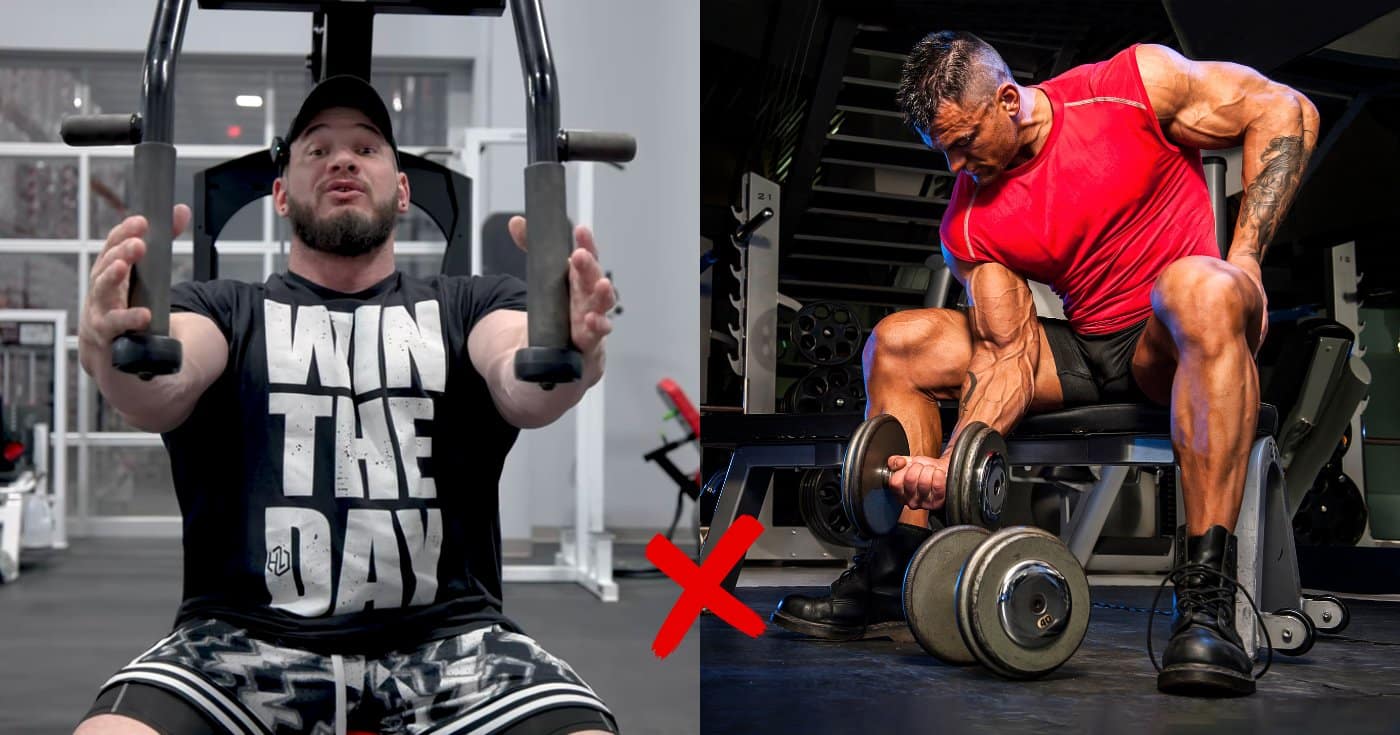Not all exercises are created equal. While many workouts promise to sculpt, tone, and transform your body, some popular moves might be setting you back rather than propelling you forward.
Whether due to the risk of injury, inefficiency, or the simple fact that there are better options out there, it’s crucial to reassess our workout routines for optimal results.
This article isn’t just about criticizing popular exercises; it’s about providing you with safer, more effective alternatives that can elevate your workout regimen to the next level.
So what are the worst 16 exercises?
Jump to:
- 1. Pec Deck Fly
- 2. Concentration Curl
- 3. Triceps Kickback
- 4. Rolling Shrug
- 5. Leg Extension
- 6. Leg Curl
- 7. Lateral Raise
- 8. Any Heavyweight Exercise Done Standing on a BOSU Ball
- 9. Weighted Side Bend
- 10. Anything on the Smith Machine
- 11. Hyperextension
- 12. Yates Row
- 13. Partial Squat
- 14. Behind-the-Neck Pulldown
- 15. Behind-the-Neck Press
- 16. Ab Machines
- Conclusion
- References:
1. Pec Deck Fly

Why It Sucks: The Pec Deck Fly is a staple in many chest day routines, but it’s not without its faults. Primarily, this machine can place a significant amount of stress on the shoulder joints.
The fixed path of movement doesn’t accommodate the natural arc that the arms and shoulders follow during a chest fly, leading to potential shoulder impingement and rotator cuff issues over time.
Moreover, because it isolates the chest muscles without engaging the stabilizing muscles around the shoulders and back, it offers a less functional form of strength that doesn’t translate as well into real-world activities or other lifts.
What to Do Instead: The Dumbbell Bench Press is a fantastic alternative to the Pec Deck Fly.
Not only does it allow for a more natural movement pattern, but it also engages a broader range of muscles, including the pecs, deltoids, triceps, and the all-important stabilizers in the shoulders and core.
By adjusting the angle of the bench, you can target different parts of the chest, mimicking the pec deck’s intention but with added benefits. Focus on maintaining a controlled movement and proper form to maximize engagement and minimize the risk of injury.
Incorporating It Into Your Workout: Start with a weight that allows you to perform 8-12 reps with good form. If you’re new to the dumbbell bench press, it may be beneficial to have a spotter or start with lighter weights to ensure safety.
As you press the dumbbells up, focus on squeezing your chest muscles at the top of the movement before slowly lowering them back down. This control and focus on muscle engagement are key to making the most out of this effective chest-building exercise.
2. Concentration Curl

Why It Sucks: The Concentration Curl has been a go-to exercise for those looking to isolate their biceps.
While it might seem effective for targeting the peak of the bicep muscle, its seated, isolated nature limits the engagement of other muscle groups and the body’s overall functional strength.
This isolation can lead to imbalances since the biceps don’t work in a vacuum in real-life activities or sports. Additionally, the fixed position can put unnecessary strain on the shoulders and elbows over time.
What to Do Instead: Standing Barbell Curls offer a more holistic approach to bicep development.
This exercise not only allows for a full range of motion but also engages the core, shoulders, and forearms, promoting a more balanced muscular development and functional strength. By standing, you’re also mimicking more natural movement patterns, which can enhance your performance in sports and daily activities.
Incorporating It Into Your Workout: To properly execute Standing Barbell Curls, stand with your feet shoulder-width apart and grip the barbell with your hands also shoulder-width apart.
Keep your elbows close to your torso and your back straight. Curl the bar towards your chest, focusing on moving only your forearms. Pause at the top, then slowly lower the bar back to the starting position. Aim for 3 sets of 8-12 repetitions, adjusting the weight to suit your strength level.
3. Triceps Kickback

Why It Sucks: Triceps Kickbacks are often touted for their ability to target the triceps muscles.
However, the position and movement restrict the amount of weight you can use without compromising form, which can limit their effectiveness.
Additionally, the bent-over position can put unnecessary strain on the lower back, especially with improper form or heavier weights.
What to Do Instead: Skull Crushers or Lying Triceps Extensions are excellent alternatives that allow for a greater range of motion and the ability to use more weight safely, leading to better triceps development.
Performed on a bench, they also reduce the risk of lower back strain and engage the core for stabilization.
Incorporating It Into Your Workout: Lie on a flat bench with a barbell or EZ curl bar.
Start with the weight directly above your chest, arms extended. Keeping your upper arms stationary, bend at the elbows to lower the weight towards your forehead. Stop just short of the weight touching your forehead, then extend your arms back to the starting position.
Focus on keeping the movement controlled, especially during the descent. Aim for 3 sets of 8-12 reps, choosing a weight that challenges your muscles while allowing you to maintain proper form.
4. Rolling Shrug
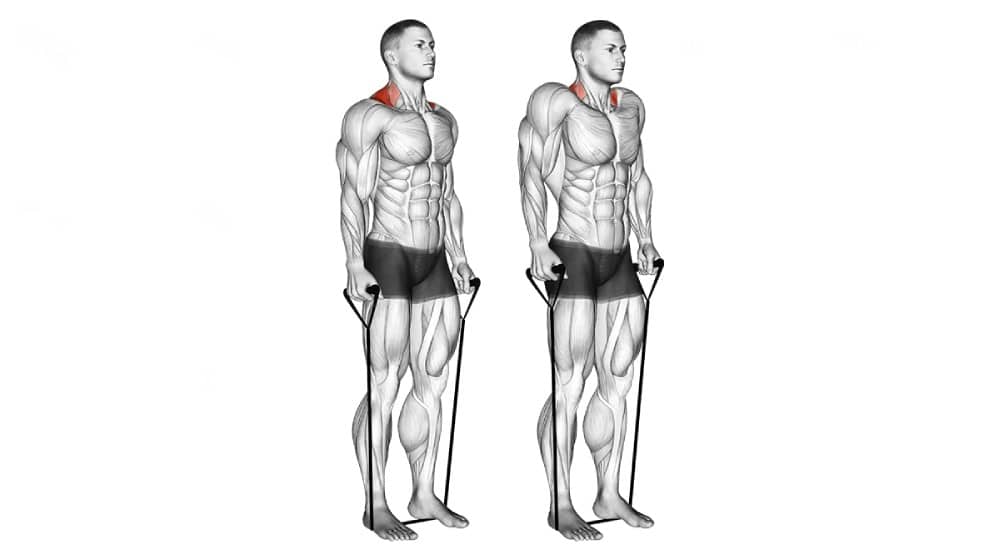
Why It Sucks: Rolling Shrugs are often performed in an attempt to work the trapezius muscles from multiple angles.
However, the rolling motion can actually increase the risk of straining these muscles and the surrounding neck area. This movement puts unnecessary tension on the shoulders and neck, potentially leading to long-term issues or discomfort.
What to Do Instead: Standard Shrugs with a focus on proper form and controlled movement are a safer and more effective way to build trap strength and size.
By eliminating the roll, you reduce the risk of injury and ensure a more targeted engagement of the trapezius muscles.
Incorporating It Into Your Workout: Stand with your feet shoulder-width apart, holding a dumbbell in each hand at your sides.
Keeping your back straight and eyes forward, lift your shoulders straight up towards your ears as high as possible, then slowly lower them back down. The key is to avoid rolling your shoulders and to keep the movement vertical.
Aim for 3 sets of 10-15 reps, with a weight that is challenging but allows you to maintain good form throughout the exercise.
5. Leg Extension
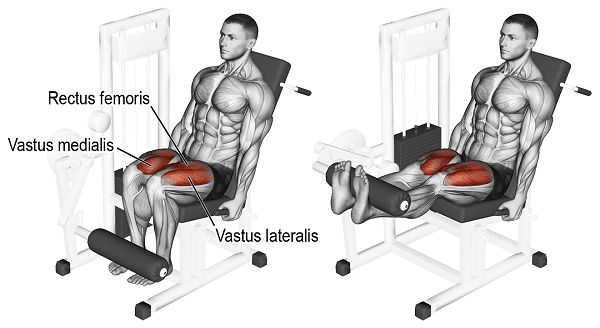
Using a leg extension machine isn’t functional – there is no natural movement in life were you sit and straighten your knee with a 100-pound load against it
Joe Tatta, DPT
Why It Sucks: While Leg Extensions are popular for targeting the quadriceps, they can put an unnatural amount of stress on the knee joints.
The seated, isolated nature of the exercise means it doesn’t engage the surrounding muscles necessary for functional leg strength, leading to potential imbalances and a higher risk of injury during practical activities or sports.
What to Do Instead: Squats, whether with a barbell, dumbbells, or just bodyweight, offer a compound movement that not only targets the quads but also involves the glutes, hamstrings, and core, contributing to overall lower body strength and balance.
Squats mimic natural movement patterns, making them more applicable to real-world activities.
Incorporating It Into Your Workout: For a proper squat, stand with your feet shoulder-width apart and your toes slightly pointed out.
Keeping your chest up and back straight, bend at the knees and hips to lower your body as if sitting back into a chair. Go down until your thighs are parallel to the ground, then push back up to the starting position.
Focus on keeping your knees in line with your toes and avoid letting them collapse inward. Aim for 3 sets of 8-12 reps, adjusting the weight or using body weight according to your fitness level.
6. Leg Curl
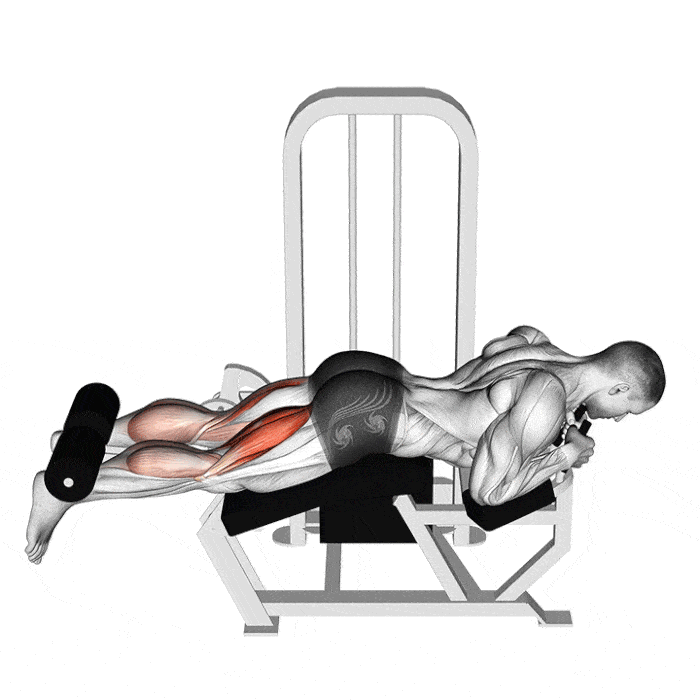
Why It Sucks: The Leg Curl machine focuses on isolating the hamstrings, which can lead to muscle imbalances when not complemented with exercises that target the surrounding muscles.
This isolation movement does not mimic any natural movement patterns, which limits its functional benefit. Additionally, the fixed path of movement can put unnecessary strain on the knees and hips.
What to Do Instead: Romanian Deadlifts (RDLs) are a superior alternative that targets the hamstrings, glutes, and lower back, offering a more comprehensive posterior chain workout.
RDLs promote balance and strength in a way that is applicable to everyday movements and athletic performance.
Incorporating It Into Your Workout: Start with your feet hip-width apart, holding a barbell or dumbbells in front of your thighs.
Keeping your knees slightly bent, hinge at the hips to lower the weights towards the floor, maintaining a flat back and a neutral neck position. Lower until you feel a stretch in your hamstrings, then drive through your heels to return to the starting position.
Aim for 3 sets of 8-10 reps, focusing on form and the stretch-and-contract movement of the hamstrings.
7. Lateral Raise

Why It Sucks: Performed incorrectly, Lateral Raises can lead to shoulder impingement and unnecessary stress on the rotator cuff muscles.
This is often due to lifting too heavy, which encourages the use of momentum rather than muscle engagement, or lifting the arms above parallel to the ground, which puts the shoulders in a vulnerable position.
What to Do Instead: Cable Face Pulls offer a safer, more effective way to strengthen the shoulder muscles, particularly the rear deltoids, which are often neglected in shoulder workouts.
This exercise also engages the upper back and helps improve shoulder health and posture.
Incorporating It Into Your Workout: Attach a rope to a high pulley on a cable machine. Grasp the rope with both hands and step back to create tension.
Pull the rope towards your face, splitting it apart as you do so, and aim to bring your hands beside your ears. Focus on squeezing your shoulder blades together at the end of the movement. Return to the starting position with control.
Aim for 3 sets of 12-15 reps, with a focus on control and muscle engagement rather than lifting heavy.
8. Any Heavyweight Exercise Done Standing on a BOSU Ball
Why It Sucks: Performing heavyweight exercises on an unstable surface like a BOSU Ball can compromise form and increase the risk of injury.
The instability does not significantly enhance the exercise’s effectiveness but does significantly raise the risk of falling or straining muscles as they attempt to stabilize the body in an unnatural position.
What to Do Instead: Focusing on solid ground exercises allows for greater control and safety when lifting heavier weights.
If the goal is to improve balance and core strength, separate exercises specifically designed for this purpose, such as single-leg exercises or using a stability ball for core workouts, are more effective and safer options.
Incorporating It Into Your Workout: Incorporate exercises like single-leg Romanian deadlifts or stability ball planks into your routine to improve balance and core strength without the risks associated with lifting heavy weights on an unstable surface.
These exercises provide a safer way to achieve the intended benefits of balance and stability training.
9. Weighted Side Bend

Why It Sucks: Weighted Side Bends are often used to target the oblique muscles with the goal of achieving a ‘slimmer’ waist.
However, this exercise can inadvertently contribute to widening the waistline by thickening the oblique muscles. Additionally, it can put unnecessary strain on the spine when performed with heavy weights.
What to Do Instead: Planks and their variations, such as side planks, provide a comprehensive core workout that includes the obliques, rectus abdominis, and the deep core muscles without adding bulk to the waist.
These exercises encourage core stabilization, which is more beneficial for overall strength and posture.
Incorporating It Into Your Workout: For a side plank, lie on your side with your legs straight and prop up your body on your forearm, with your elbow directly under your shoulder.
Lift your hips off the ground, forming a straight line from your ankles to your shoulders, and hold the position. Aim to hold for 30-60 seconds, or as long as you can maintain good form, then switch sides.
10. Anything on the Smith Machine
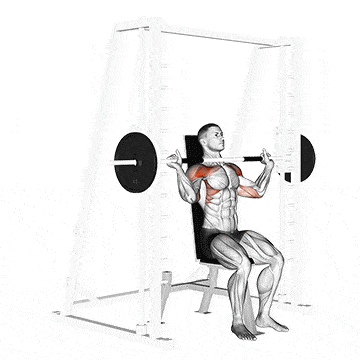
Why It Sucks: Exercises performed on the Smith Machine are often criticized for their limited range of motion, as the machine guides the weight along a fixed path.
This can prevent the activation of stabilizing muscles and may lead to an unnatural movement pattern, increasing the risk of injury and decreasing the effectiveness of the exercise.
What to Do Instead: Free weights (barbells and dumbbells) offer a more natural range of motion and require the engagement of stabilizing muscles, promoting better muscle balance and coordination.
Whether it’s squats, presses, or deadlifts, performing these exercises with free weights will enhance their overall effectiveness.
Incorporating It Into Your Workout: When transitioning to free weights, start with a lighter weight than you’re used to on the Smith Machine to get accustomed to the added challenge of stabilizing the weight.
Focus on maintaining proper form, and gradually increase the weight as you become more comfortable with the movements.
11. Hyperextension
Why It Sucks: While aimed at strengthening the lower back, Hyperextensions can often lead to overextension and strain on the lumbar spine when performed excessively or with improper form.
This can exacerbate lower back issues instead of alleviating them.
What to Do Instead: Bird Dogs are a safer alternative that strengthens the lower back, core, and glutes while promoting spinal alignment and stability.
This exercise minimizes the risk of lower back strain by keeping the spine in a neutral position throughout the movement.
Incorporating It Into Your Workout: Start on all fours, with your hands under your shoulders and knees under your hips.
Extend one arm and the opposite leg until they are in line with your body, hold for a moment, then return to the starting position and switch sides. Focus on keeping your hips and shoulders square to the ground to maximize core engagement.
Aim for 2-3 sets of 10-12 reps on each side.
12. Yates Row
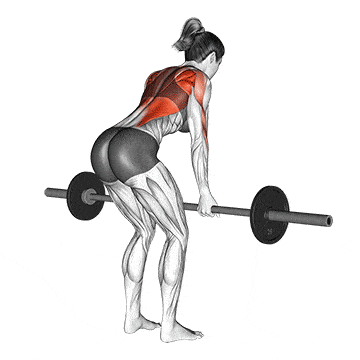
Why It Sucks: The Yates Row, performed with an underhand grip, can place excessive stress on the biceps tendons and wrists.
This variation of the row also tends to encourage a more upright torso, which can reduce the engagement of the targeted upper back muscles and increase lower back strain.
What to Do Instead: The traditional Overhand Bent-Over Row offers a safer grip and posture, effectively targeting the back muscles while minimizing the risk to the biceps and wrists.
This variation encourages a hinge at the hips and a more pronounced forward lean, engaging the lats, rhomboids, and traps more effectively.
Incorporating It Into Your Workout: With a barbell and an overhand grip, hinge at the hips until your torso is nearly parallel to the floor. Pull the barbell towards your lower ribs, keeping your elbows close to your body.
Lower the weight with control. Aim for 3 sets of 8-12 reps, focusing on squeezing your shoulder blades together at the top of the movement.
13. Partial Squat
Why It Sucks: Partial Squats, where the descent is limited and doesn’t reach the depth where thighs are parallel to the ground, can lead to imbalanced muscle development and place undue stress on the knees.
Full range of motion in squats is essential for complete leg development and joint health.
What to Do Instead: Full Squats ensure that you’re working through the entire range of motion, engaging the quads, hamstrings, and glutes effectively. This promotes balanced muscle growth and joint mobility, reducing the risk of injury.
Incorporating It Into Your Workout: Begin with your feet shoulder-width apart, toes slightly pointed out.
Descend by bending your knees and hips, keeping your chest up and back straight, until your thighs are at least parallel to the floor. Drive through your heels to return to the starting position. Use a weight that allows you to complete 3 sets of 8-12 reps with proper form.
14. Behind-the-Neck Pulldown
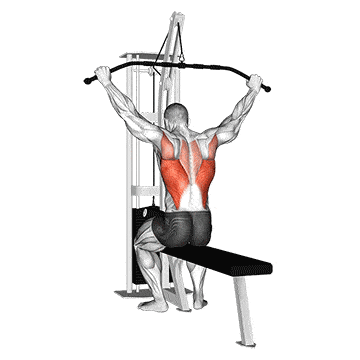
The Behind-the-Neck lat pull-down places a lot of stress on the anterior joint capsule of the shoulder and can eventually lead to impingement or even rotator cuff tears
Jessica Malpelli, DPT
Why It Sucks: Pulling the bar behind the neck can put the shoulders in a compromised position, potentially leading to rotator cuff injuries and reduced mobility.
This unnatural movement pattern doesn’t offer additional benefits over safer alternatives.
What to Do Instead: Front Lat Pulldowns are performed by pulling the bar down in front of your head to the upper chest.
This variation maintains the shoulders’ health and effectively targets the lats without the risks associated with behind-the-neck movements.
Incorporating It Into Your Workout: Sit at a lat pulldown machine with your feet flat on the floor.
Grab the bar with a wide grip, and pull the bar down to your chest, squeezing your shoulder blades together at the bottom of the movement.
Slowly return to the starting position. Aim for 3 sets of 10-12 reps, ensuring that the motion is controlled and focused.
15. Behind-the-Neck Press

Why It Sucks: Similar to the Behind-the-Neck Pulldown, the Behind-the-Neck Press places the shoulders in a potentially harmful position, increasing the risk of impingement and injury.
This exercise can strain the neck and shoulders, especially under heavy loads.
What to Do Instead: The Military Press or Overhead Press performed with the bar in front of the head is a safer and more effective way to build shoulder strength.
This exercise allows for a natural range of motion, engaging the deltoids, triceps, and upper chest without compromising shoulder health.
Incorporating It Into Your Workout: Stand or sit with your feet shoulder-width apart, holding a barbell at shoulder height with your hands just outside your shoulders.
Press the weight straight up until your arms are fully extended, then lower it back to the starting position. Keep your core engaged and your back straight throughout the movement. Aim for 3 sets of 8-10 reps, focusing on form and controlled movements.
16. Ab Machines
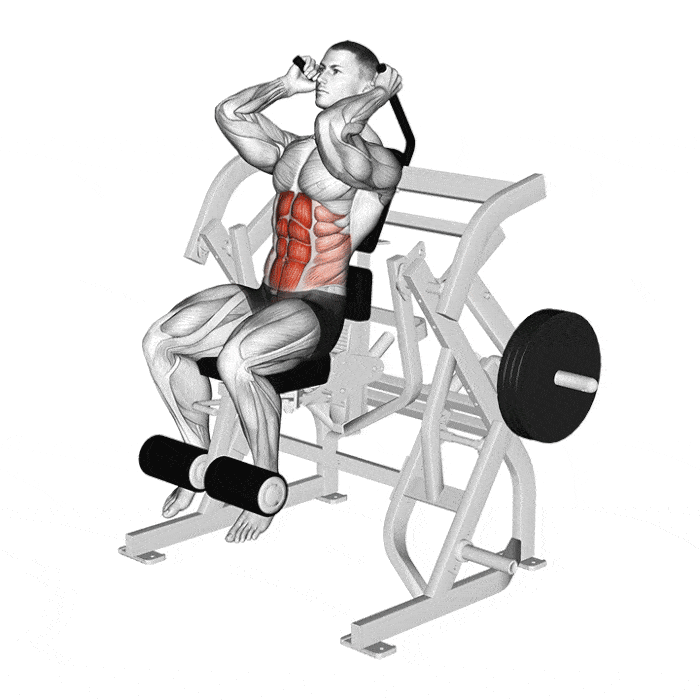
Why It Sucks: Many ab machines lock you into a fixed path of movement that can place unnatural stress on the lower back and hip flexors, potentially leading to discomfort or injury.
Additionally, they often target a limited range of the core muscles, neglecting the deeper stabilizers that are crucial for a strong, functional core.
What to Do Instead: Bodyweight exercises like Hanging Leg Raises or Bicycle Crunches offer a more comprehensive core workout, engaging not just the superficial abs but also the deeper core muscles, obliques, and hip flexors in a balanced and functional way.
Incorporating It Into Your Workout: For Hanging Leg Raises, grip a pull-up bar with your hands shoulder-width apart and hang with your legs straight.
Lift your legs towards the bar while keeping them straight, then lower them back down with control. For Bicycle Crunches, lie on your back with your hands behind your head and bring your knees in towards your chest.
Alternate touching your elbows to the opposite knees, extending the other leg out. Aim for 3 sets of 12-15 reps for each exercise, focusing on controlled movements and full engagement of the core.
Conclusion
For those eager to dive deeper into creating a well-rounded fitness program, these 3 workout structures could be a great next step:
- https://boxlifemagazine.com/pull-day-workout/
- https://boxlifemagazine.com/push-day-routines/
- https://boxlifemagazine.com/leg-day-workout-men/
References:
- Schoenfeld B. J. (2010). The mechanisms of muscle hypertrophy and their application to resistance training. Journal of strength and conditioning research, 24(10), 2857–2872.
- Behm, D. G., Drinkwater, E. J., Willardson, J. M., Cowley, P. M., & Canadian Society for Exercise Physiology (2010). Canadian Society for Exercise Physiology position stand: The use of instability to train the core in athletic and nonathletic conditioning. Applied physiology, nutrition, and metabolism = Physiologie appliquee, nutrition et metabolisme, 35(1), 109–112.



